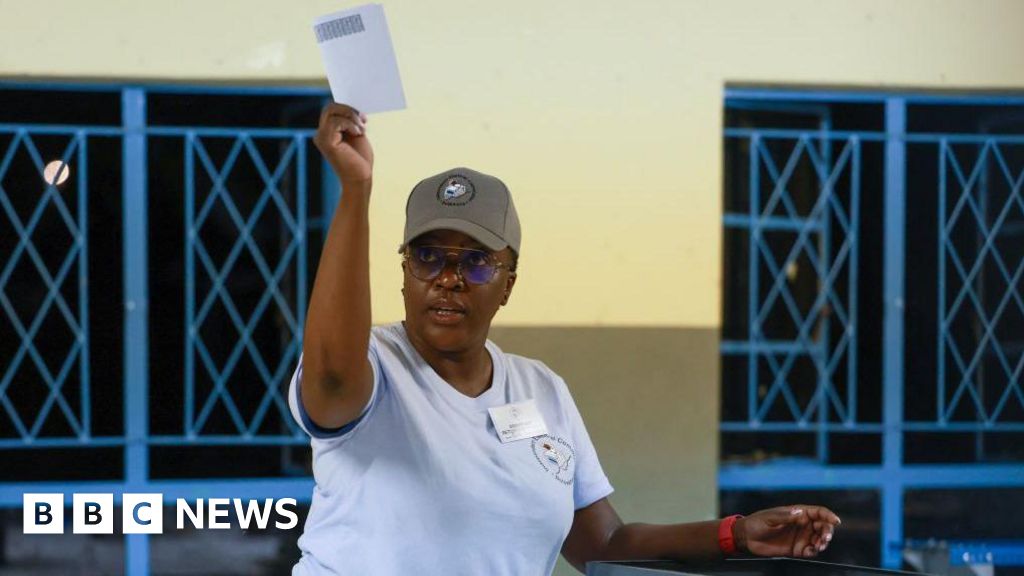ARTICLE AD BOX
Watch: The moment India launched historic Moon mission
By Geeta Pandey
BBC News, Delhi
Chandrayaan-3, India's latest Moon mission, has entered the lunar orbit, the country's space agency has said.
The spacecraft with an orbiter, lander and a rover lifted off on 14 July. It will try to set the lander and rover on the lunar surface on 23 or 24 August.
If successful, India will be the first country to land near the Moon's little-explored south pole.
It will be only the fourth to achieve a soft landing on the Moon, after the US, the former Soviet Union and China.
After the spacecraft orbited the Earth for more than a week, it was sent into the translunar orbit on Tuesday through a slingshot manoeuvre.
The third in India's programme of lunar exploration, Chandrayaan-3 is expected to build on the success of its earlier Moon missions.
It comes 13 years after the country's first Moon mission in 2008, which discovered the presence of water molecules on the parched lunar surface and established that the Moon has an atmosphere during daytime.
Chandrayaan-2 - which also comprised an orbiter, a lander and a rover - was launched in July 2019 but it was only partially successful. Its orbiter continues to circle and study the Moon even today, but the lander-rover failed to make a soft landing and crashed during touchdown.
Indian Space Research Organisation (Isro) chief Sreedhara Panicker Somanath has said they have carefully studied the data from its crash and carried out simulation exercises to fix the glitches in Chandrayaan-3, which weighs 3,900kg and cost 6.1bn rupees ($75m; £58m).
The lander (called Vikram, after the founder of Isro) weighs about 1,500kg and carries within its belly the 26kg rover which is named Pragyaan, the Sanskrit word for wisdom.
On Tuesday, Isro tweeted that the spacecraft had completed its orbits around the Earth and was headed towards the Moon.
"A successful perigee-firing performed at Isro has injected the spacecraft into the translunar orbit. Next stop: the Moon," it said. A perigee is the point in the orbit closest to the Earth.
Now that the craft has entered the Moon's orbit, scientists will begin reducing the rocket's speed gradually to bring it to a point which will allow a soft landing for Vikram.
Once it lands, the six-wheeled rover will eject and roam around the rocks and craters on Moon's surface, gathering crucial data and images to be sent back to Earth for analysis.
"The rover is carrying five instruments which will focus on finding out about the physical characteristics of the surface of the Moon, the atmosphere close to the surface and the tectonic activity to study what goes on below the surface. I'm hoping we'll find something new," Mr Somanath has said.
The south pole of the Moon is still largely unexplored - the surface area that remains in shadow there is much larger than that of the Moon's north pole, and scientists say it means there is a possibility of water in areas that are permanently shadowed.
India is not the only country with an eye on the Moon - there's a growing global interest in it. And scientists say there is still much to understand about the Moon that's often described as a gateway to deep space.
BBC News India is now on YouTube. Click here to subscribe and watch our documentaries, explainers and features.

 1 year ago
97
1 year ago
97








 English (US)
English (US)